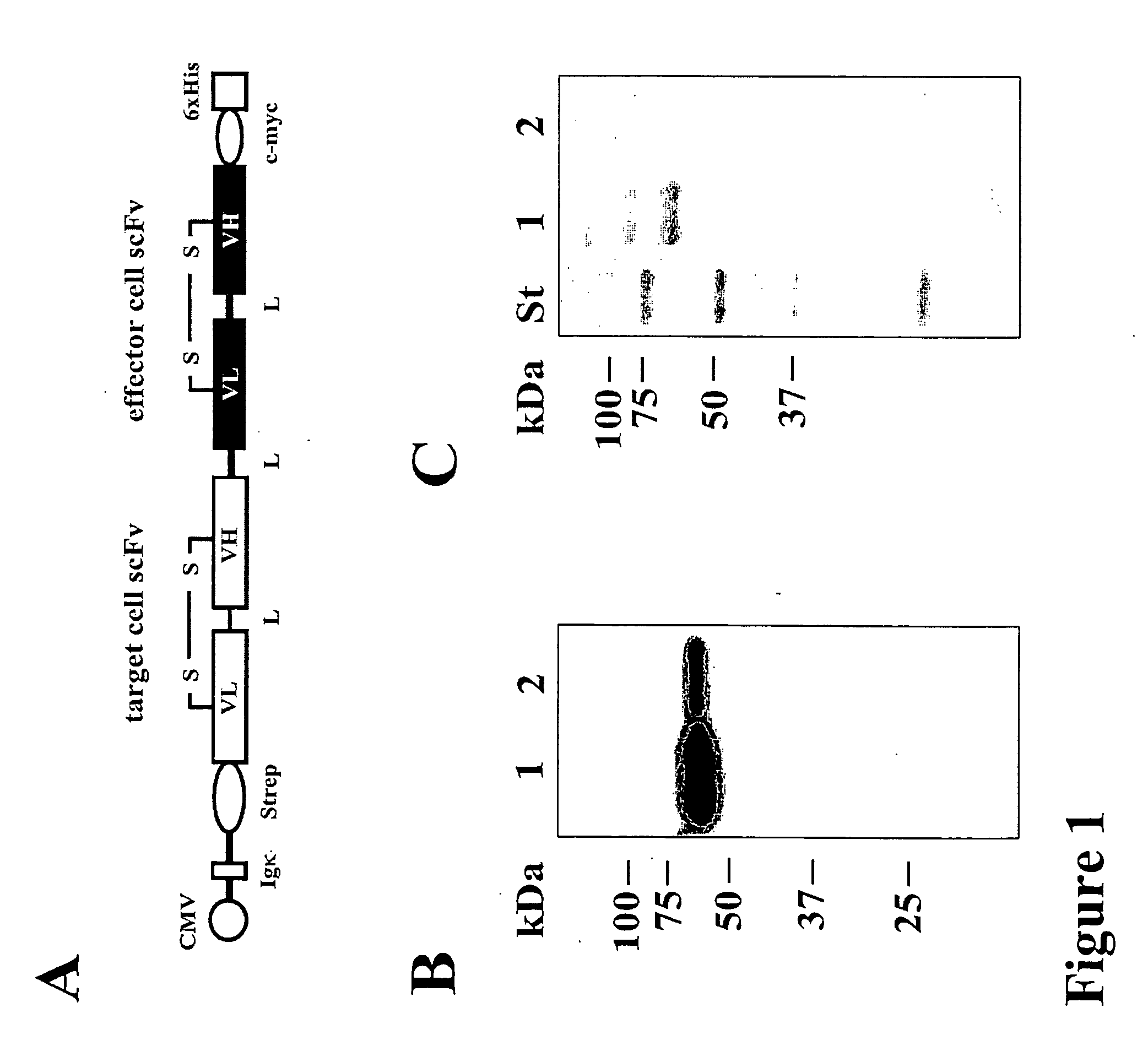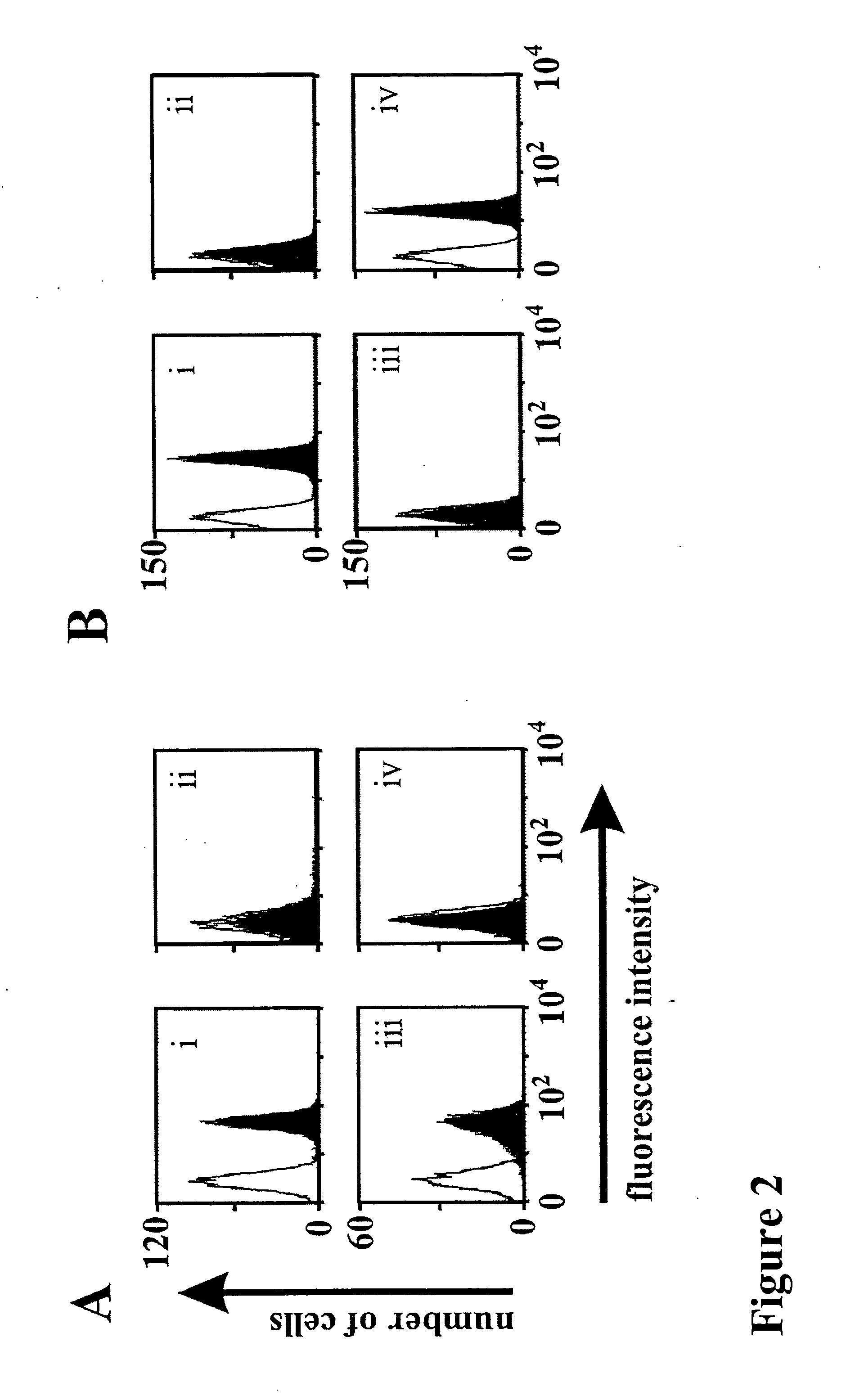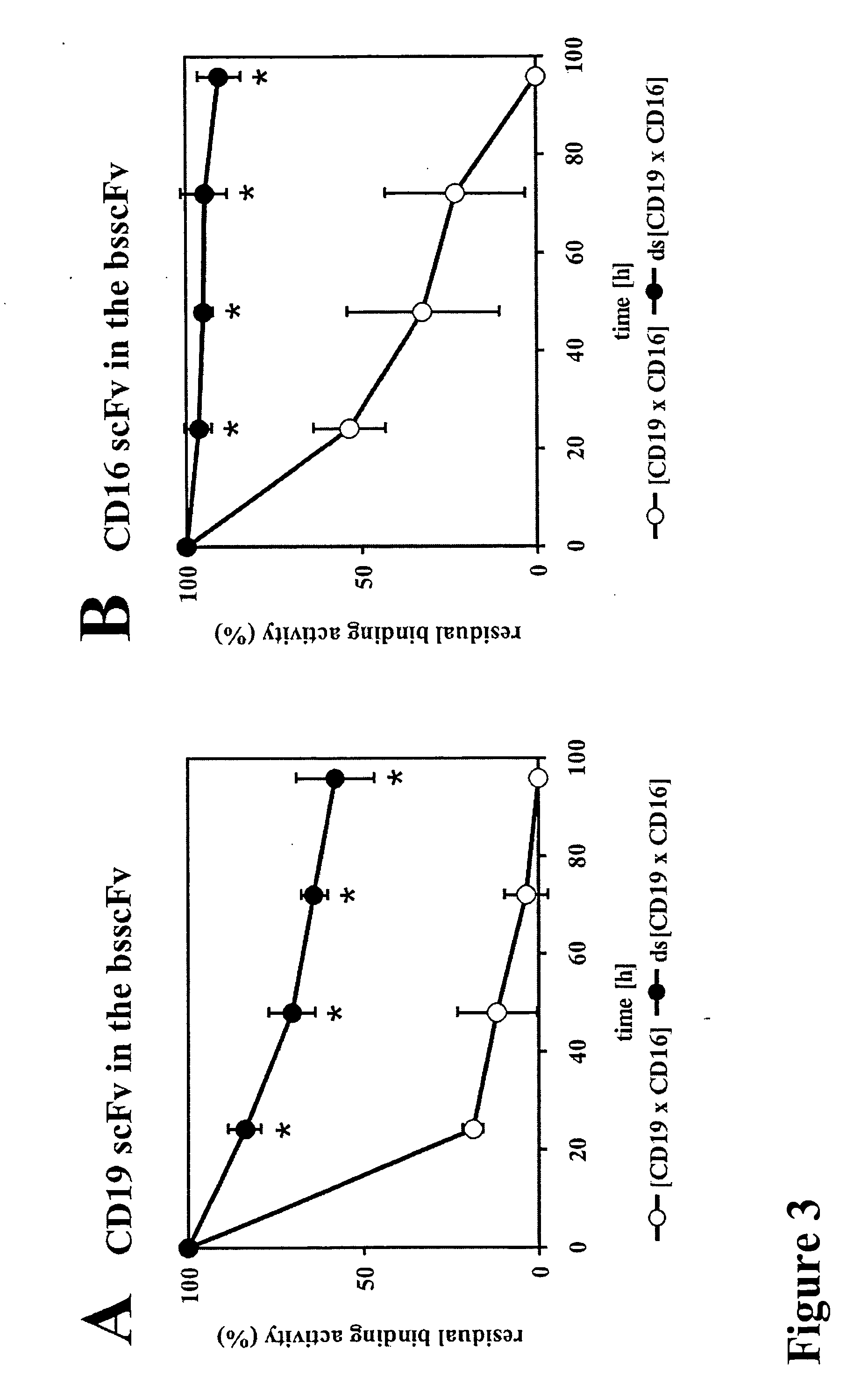Bispecific antibody devoid of Fc region and method of treatment using same
a technology of fc region and bispecific antibody, which is applied in the field of antibodies, can solve the problems of non-specific sticking, scfvs instability is problematic, and the limitations of conventional antibodies of chimeric antibodies, and achieves the effect of avoiding undesirable effector functions and efficient production
- Summary
- Abstract
- Description
- Claims
- Application Information
AI Technical Summary
Benefits of technology
Problems solved by technology
Method used
Image
Examples
example 1
Materials and Methods
[0056] Antibodies and Bispecific Antibodies
[0057] The hybridoma cell line 3G8 (FcγRIII, CD16; mIgG1) (Fleit, H. B., Wright, S. D. & Unkeless, J. C. (1982) Human neutrophil Fcg receptor distribution and structure. Proc Natl Acad Sci USA, 79, 3275-3279.) was from the American Type Cell Culture Collection (ATCC, Manassas, Va.). The 4G7 hybridoma (CD19, mIgG1) (Meeker et al, 1984) was provided by Dr. R. Levy (Stanford University, Palo Alto, Calif.). The monoclonal antibodies used for detection of recombinant proteins were Penta-His (Qiagen, Hilden, Germany), horseradish peroxidase (HRP)-coupled sheep anti-mouse IgG (Dianova, Hamburg, Germany), phycoerythrin (PE)-coupled goat anti-mouse IgG (DAKO Diagnostica GmbH, Hamburg, Germany) and PE-coupled donkey anti mouse IgG VL+VH (Dianova, Hamburg, Germany).
Culture of Eukaryotic Cells
[0058] Chinese hamster ovary (CHO) cells, stably transfected with a human CD16A cDNA expression construct, were provided by Dr. Jan van...
PUM
| Property | Measurement | Unit |
|---|---|---|
| concentration | aaaaa | aaaaa |
| subsaturating concentrations | aaaaa | aaaaa |
| concentrations | aaaaa | aaaaa |
Abstract
Description
Claims
Application Information
 Login to View More
Login to View More - R&D
- Intellectual Property
- Life Sciences
- Materials
- Tech Scout
- Unparalleled Data Quality
- Higher Quality Content
- 60% Fewer Hallucinations
Browse by: Latest US Patents, China's latest patents, Technical Efficacy Thesaurus, Application Domain, Technology Topic, Popular Technical Reports.
© 2025 PatSnap. All rights reserved.Legal|Privacy policy|Modern Slavery Act Transparency Statement|Sitemap|About US| Contact US: help@patsnap.com



